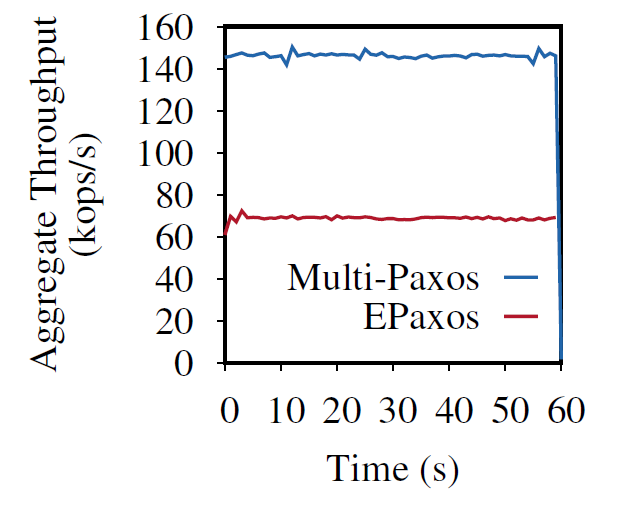replicated state machine
-
Reading Group. EPaxos Revisited.
In the 88th DistSys meeting, we discussed the “EPaxos Revisited” NSDI’21 paper by Sarah Tollman, Seo Jin Park, and John Ousterhout. We had an improvised presentation, as I had to step in and talk about the paper on short notice without much preparation. EPaxos Background Today’s paper re-evaluates one very popular in academia state machine…
-
Reading Group. Viewstamped Replication Revisited
Our 74th paper was a foundational one — we looked at Viestamped Replication protocol through the lens of the “Viewstamped Replication Revisited” paper. Joran Dirk Greef presented the protocol along with bits of his engineering experience using the protocol in practice. Viestamped Replication (VR) solves the problem of state machine replication in a crash fault…
-
Reading Group. Fault-Tolerant Replication with Pull-Based Consensus in MongoDB
In the last reading group meeting, we discussed MongoDB‘s replication protocol, as described in the “Fault-Tolerant Replication with Pull-Based Consensus in MongoDB” NSDI’21 paper. Our reading group has a few regular members from MongoDB, and this time around, Siyuan Zhou, one of the paper authors, attended the discussion, so we had a perfect opportunity to…
-
Scalable but Wasteful or Why Fast Replication Protocols are Actually Slow

In the last decade or so, quite a few new state machine replication protocols emerged in the literature and the internet. I am “guilty” of this myself, with the PigPaxos appearing in this year’s SIGMOD and the PQR paper at HotStorage’19. There are better-known examples as well — EPaxos inspired a lot of development in…
-
Reading Group. Protocol-Aware Recovery for Consensus-Based Storage
Our last reading group meeting was about storage faults in state machine replications. We looked at the “Protocol-Aware Recovery for Consensus-Based Storage” paper from FAST’18. The paper explores an interesting omission in most of the state machine replication (SMR) protocols. These protocols, such as (multi)-Paxos and Raft, are specified with the assumption of having a…
Search
Recent Posts
- Paper #196. The Sunk Carbon Fallacy: Rethinking Carbon Footprint Metrics for Effective Carbon-Aware Scheduling
- Paper #193. Databases in the Era of Memory-Centric Computing
- Paper #192. OLTP Through the Looking Glass 16 Years Later: Communication is the New Bottleneck
- Paper #191: Occam’s Razor for Distributed Protocols
- Spring 2025 Reading List (Papers ##191-200)
Categories
- One Page Summary (10)
- Other Thoughts (10)
- Paper Review and Summary (14)
- Pile of Eternal Rejections (2)
- Playing Around (14)
- Reading Group (103)
- RG Special Session (4)
- Teaching (2)